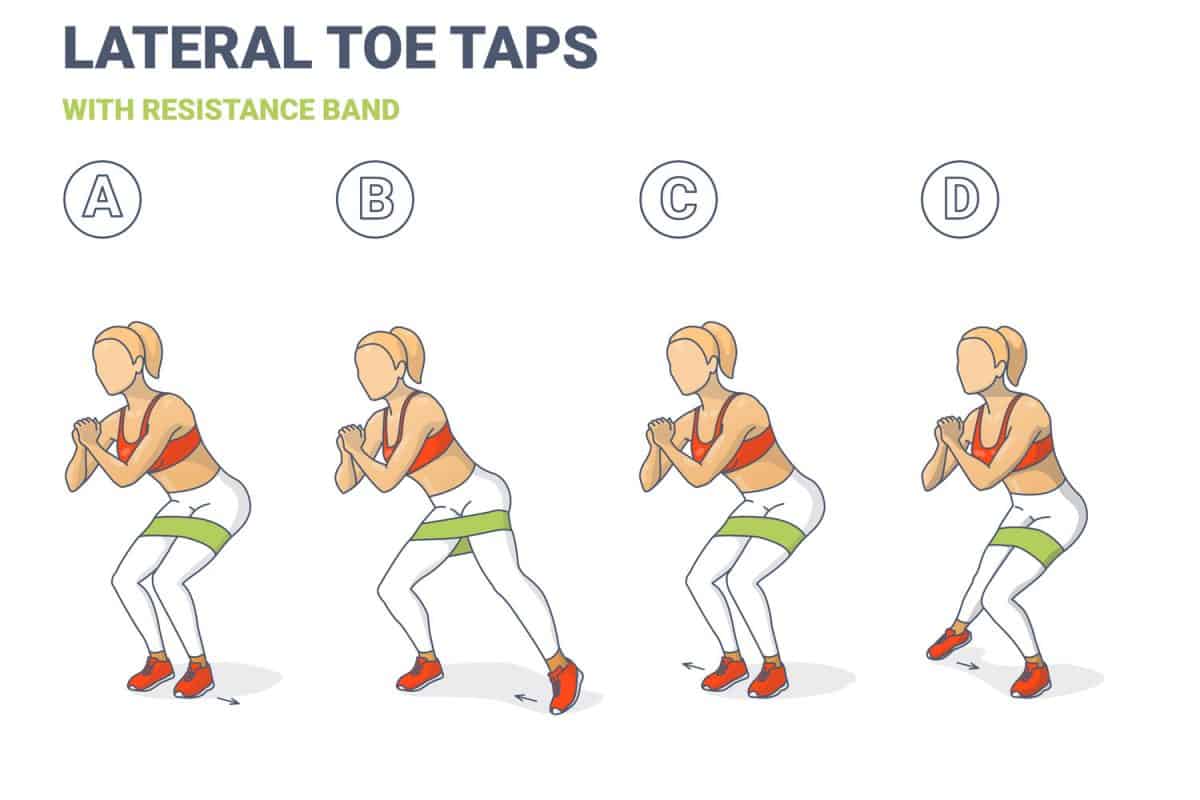Adding a resistance band to the mix can help you change up your workout routine. These bands can become the equivalent of working out with various-sized dumbbells, making these light rubber bands seem very, very heavy. How heavy exactly, you may be wondering. Resistance bands come in many styles, brands, and weights. We gathered as much information as we could to give you this guide, breaking down the weight of resistant bands and answering which one will be right for you.
Extra-heavy resistance bands will weigh the most. These bands can create up to 175 lbs of resistance, depending on how far you stretch it. This sounds intense because it is. Don't worry. Resistance bands come in a large range of weights. You can find resistance bands as light as 5 lbs and every weight in between.
The range of resistance band weight means there is one available for every fitness level. Now we know this range, you may be asking yourself if specific bands should be used for certain body parts. Keep reading as we answer this and lay out some safety tips for using your bands.

How Is The Resistance Band Weight Determined?
The weight of a resistance band can be measured using a scale. The type of scale can change depending on the brand and producer, but the weighing methods have similarities. Bands get attached to the scale of choice, and a reading gets recorded at the start of the band's pull. Another measurement gets recorded once the band is at the farthest but safe distance from the anchor point. An average of these two numbers is taken to determine the pounds of resistance for the specific band.

Are Resistance Bands Color Coded?
Resistance bands are color-coded. These colors can be determined by how much resistance or weight the band has and can categorize which body parts the band goes with. Different colors will indicate varying band weights such as light, medium, heavy, and robust.
The color coding can have slight variations between brands. Always double-check the intended weight, resistance, and style before making your purchase to ensure you are getting what you want. Let's take a closer look at what the color of these bands tells us.

Black
Black resistance bands are the most heavy-duty out of the colors. You will see the weight of black bands labeled as heavy or robust. Black bands are utilized by the experienced and most muscular among us. Black bands are intended for large muscle groups, such as the legs.
Do not take on the challenge until you are well versed in the appropriate use of resistance bands. Misusing a band of this weight can leave you with some serious injuries.
You can view a heavy resistance (black) band here on Amazon.
Blue
Blue bands are in the same group as the black resistance bands, meaning they are of heavier resistance. The weight of blue bands will fall under the heavy label. You will often use blue bands when doing an exercise with another person. These stiff bands also focus on larger muscle groups, like legs, back, and chest.
View these durable, mini blue resistance bands here on Amazon.
Red
Red resistance bands are a good middle ground. They are not as heavy-duty as black or blue bands but give a larger challenge than yellow or green resistance bands. Red bands still focus on those larger muscle groups, like the legs and back, and falls under a medium weight.
Find red resistance bands here on Amazon.
Green
You will find medium levels of tension with green resistance bands. These are on the lighter side compared to the others we talked about but are one step above the yellow bands. Green bands are great for working your biceps and triceps. These bands can be labeled as medium to lightweight bands.
View this beginner set of resistance bands that includes a green band here on Amazon.
Yellow
These bands will be the best option for beginners. Starting with a yellow band that has a low resistance will give you the opportunity and flexibility to learn correct postures and positions when working with a band. Yellow bands are great when working around joints such as the shoulders and are classified as a lightweight band.
Read more on our blog post, 5 Types Of Resistance Bands To Know.
What Resistance Band(s) Should I Buy For Legs?
Along with different colors, there are different types of resistance bands. The types of bands include mini bands, pull-up bands, ankle bands, figure-eight bands, and stackable tube bands. If you are looking to do leg-specific work-outs, you'll want the right resistance band for the job.

If you are looking for a band to work your legs, glutes, ankles, and calves, the mini loop resistance bands are the way to go. These bands are on the smaller side and great for travel or any at-home workout. A common exercise to use the mini loop bands for is leg lifts. Ankle bands and stackable tube bands can also be utilized in a lower body workout.
You can get a set of mini loop resistance bands here on Amazon.
Read more on our blog post, Can You Grow Your Glutes With Resistance Bands?
What Pull-up Resistance Band(s) Do I Need?
Pull-ups can be a challenge made easier with the right resistance bands. This band will be assisting you by holding the weight of your body. Due to this, you will want a heavier resistance band, like blue or black colored bands. Pull-up bands can be used for other exercises as well. Some examples are the shoulder press or bent rows.
View a heavy blue pull-up band here on Amazon.
Read more on our blog post, How Often To Use Resistance Bands?
How Tight Should Resistance Bands Be?
You may be tempted to reach for the thickest or most tight resistance band. Doing this can hurt your body rather than fulfilling the intention of making it strong. Too tight of a band can put stress on your joints and strain muscles, but too loose of a band won't give you the challenge you are looking for. You want a band that lands in the sweet spot of resistance and flexibility. So, how do you choose the perfect fit?

Ideally, a loop resistance band should stretch up to 2 yards (1.83 meters), and a mini resistance band should stretch up to 2 feet (0.61 meters). If you can easily stretch your band past these limits, it's time to reach for one with more tension. If your band snaps back to its original size too quickly or decreases your range of motion, this is a good indication that your band is too tight. Your resistance band should be tight enough to provide a challenge with tension but loose enough to allow for your full range of motion.
Learn more on our blog post, How Long Should A Resistance Band Be?
Safety Tips For Resistance Bands
Resistance bands are easy to use, effective and inexpensive. This all sounds great, right? It is, as long as they are used correctly. Inappropriate use of a resistance band poses hazards, and safety, when used, should be considered. Let's lay out some safety tips for your resistance bands.
- Inspect all bands before use for cracks, discoloration, punctures, or scratches
- Begin all exercises with your band slowly
- Never release a band that is under tension
- Do not stretch your resistance band over 2.5 times its length
- Practice consistent care and good storage of your bands to ensure safe and proper function

There are two main mishaps when it comes to resistance band use. The band breaks, or the user accidentally lets go of one end. In both cases, the band snaps up and can cause injury. To decrease the chances of this, we check our bands thoroughly before use and ensure we are practicing correct form during work-outs alongside the other mentioned safety tips.
Learn more on our blog post, How Far Can You Stretch A Resistance Band Before It Snaps?
In Summary
Resistance bands come in many weights, offering an option for every fitness level or specific exercise. When choosing what weight your band will be, think about your strength and experience with resistance bands.
If you want various bands to work your way through, get a pack of bands that range in weight to cover all your bases. No matter what weight band you are using, ensure you practice the correct form and care with your band to avoid injury.
We hope you found this article insightful regarding the types, weights, and uses of bands. Maybe you found a product you liked or some inspiration to spice up your workout routine, at the very least.
Are you looking to learn more about resistance training? Have a look through our blog post, Is Pilates Considered Strength/Resistance Training?













